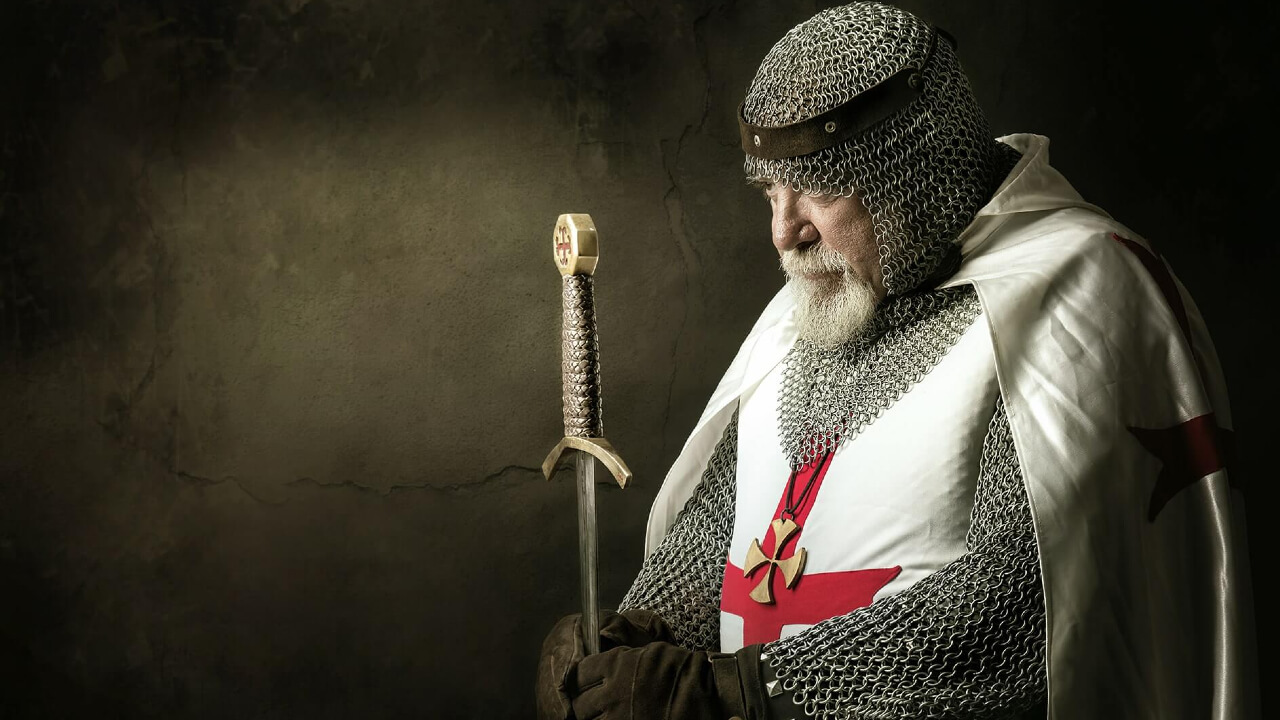Brief Templar History
The Sovereign Military Order Temple of Jerusalem - a heritage built on God Family Friendship Faith Hope Loyalty Charity Community

The Knights Templar: A Legacy of Faith and Chivalry
Founded in 1118 in the Kingdom of Jerusalem, the Knights Templar, also known as the Poor Fellow-Soldiers of Christ and of the Temple of Solomon, played a significant role in the medieval world. Established by a group of French knights led by Hugues de Payens, the order’s initial focus was on protecting Christian pilgrims traveling to the Holy Land.
Taking monastic vows, the Knights Templar dedicated themselves to a life of piety and service. Their primary responsibility was to ensure the safety of pilgrims on their journeys and to contribute to the defense of the Crusader states.
Throughout the 12th and 13th centuries, the Knights Templar distinguished themselves through their courage and devotion. They grew in prominence and influence, becoming a respected military force within the Crusader movement.
However, by the 14th century, the order faced challenges. The dissolution of the Templar Order occurred in 1312.
Despite their ultimate fate, the Knights Templar left a lasting legacy. Their commitment to Christian ideals and their role in protecting pilgrims during a tumultuous period continue to be of historical interest.
The Crusades – (1095—1291 A.D. were initiated by Pope Urban II. He gathered Christians from all over the world to battle Muslims for the purpose of recovering Jerusalem. During this period, The Knights Templar was formed in 1118 A.D. by Hugues de Payens with a primary goal of protecting the many pilgrims who made the journey to Jerusalem.
Growth and Power – The Knights became a formidable force throughout the Holy Land and Europe and were feared by all who challenged them. They amassed great wealth by virtue of noble grants and gifts received from nobility throughout the land. To manage these gifts and great wealth, the Knights were credited for the creation of what we now refer to as our modern banking system.
In 1128 A.D., the Knights were sanctioned by the Catholic Church. Pope Honorius II granted a papal sanction to them by declaring them to be an Army of God. Later, In 1139 A.D., Pope Innocent II granted the power of exemption to the Templars. They continued to fight through the remaining crusades throughout the Holy Land and were considered exempt from all local laws. Their only required obedience was to the Pope.
False Accusations & Downfall – An unscrupulous King Philip IV of France owed a great financial debt to the Knights and in order to avoid repaying this debt, he falsely accused them of heresy and blasphemy and unduly influenced Pope Clement V to dissolve the Templars in 1311 A.D.
On Friday, October 13, 1307, the Templars came under siege. They were ordered arrested. Accusations from King Philip IV were responsible for the deaths of many Templars by torture and burning at the stake. It was this day that many hold as the origin of Friday the 13th as an unlucky day.
Many Templars confessed to the heresy in order to avoid death while others escaped to distant lands. Notable among those tortured was Templar Grand Master Jacques de Molay. In 1314, de Molay denied his former confession of heresy and blasphemy due to torture. He stated that they were false and was immediately burned at the stake. This was the final event causing the Templars to go underground for nearly 500 years.
An Underground Society – The Templars escaped to such lands as Scotland and Portugal and from there, some are believed to have sailed to America and Nova Scotia. Thus the Templars survived as an underground order after 1314, both on the continent of Europe and in Scotland.
